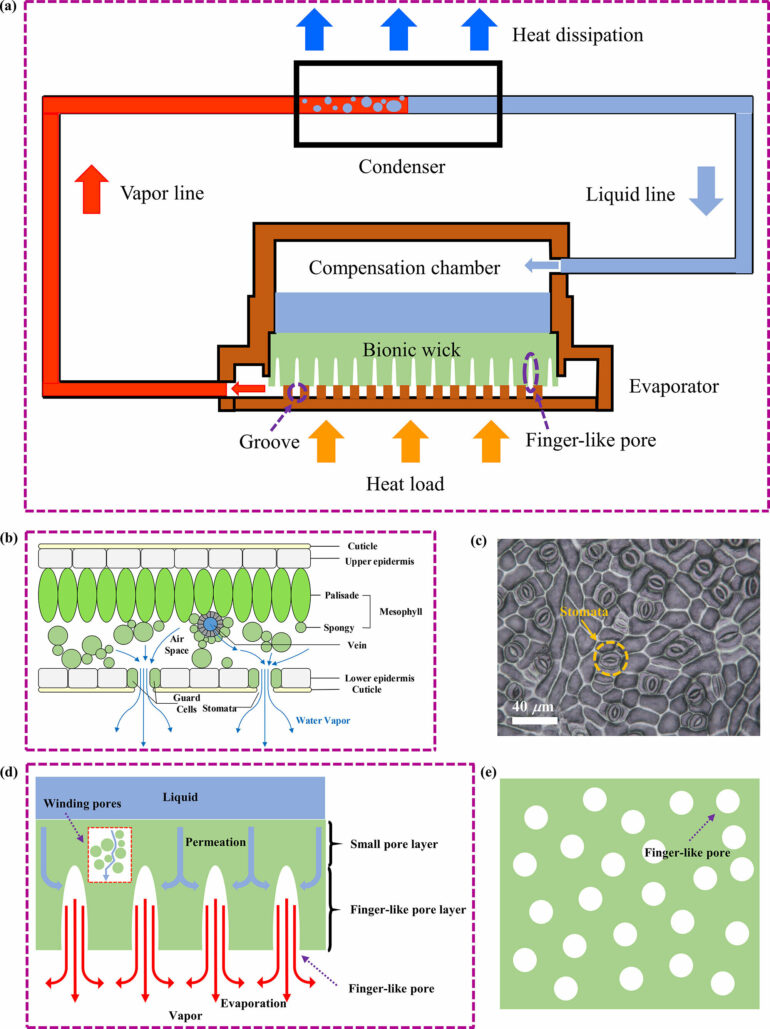A research team led by Prof. Ye Hong from the University of Science and Technology of China has developed an alumina ceramic bionic wick with finger-like pores inspired by the stomatal array of natural leaves. Their research is published in Langmuir.
As the performance of electronic chips continues to improve, their power consumption also increases, posing new challenges for cooling strategies. Loop heat pipes (LHPs) are a compelling cooling solution due to their high heat transfer capability, antigravity heat transfer, and absence of moving parts.
However, the differing requirements for flow resistance and capillary force make designing the pore structure of the capillary wick within an LHP challenging. Specifically, larger pores are needed for gaseous working fluids to reduce flow resistance, while smaller pores are necessary to provide sufficient capillary force for liquid suction.
To address this dilemma, Prof. Ye Hong’s team drew inspiration from the stomatal structure of plant leaves. Using phase inversion tape casting, they successfully developed an alumina ceramic bionic wick with finger-like pore structures. These finger-like pores, similar to the stomatal structure of plant leaves, effectively increase the gas-liquid interface area, allowing for the timely expulsion of gaseous working fluids and reducing mass transfer resistance.
Simultaneously, the micron-sized pores around the finger-like pores provide sufficient capillary force to replenish liquid at the gas-liquid evaporation interface. Start-up and operation tests of the LHP confirmed the superior heat and mass transfer performance of the bionic wick.
This work not only resolves the conflict between enhancing capillary force and reducing flow resistance, but also offers a novel solution for high-power-density electronic chip cooling. It shows potential application value in efficient thermal management for aerospace, aviation, and microelectronics fields.
More information:
Kai Xu et al, Superior Heat and Mass Transfer Performance of Bionic Wick with Finger-like Pores Inspired by the Stomatal Array of Natural Leaf, Langmuir (2024). DOI: 10.1021/acs.langmuir.4c00434
Provided by
University of Science and Technology of China
Citation:
Bio-inspired wick enhances electronic chip cooling (2024, September 11)



